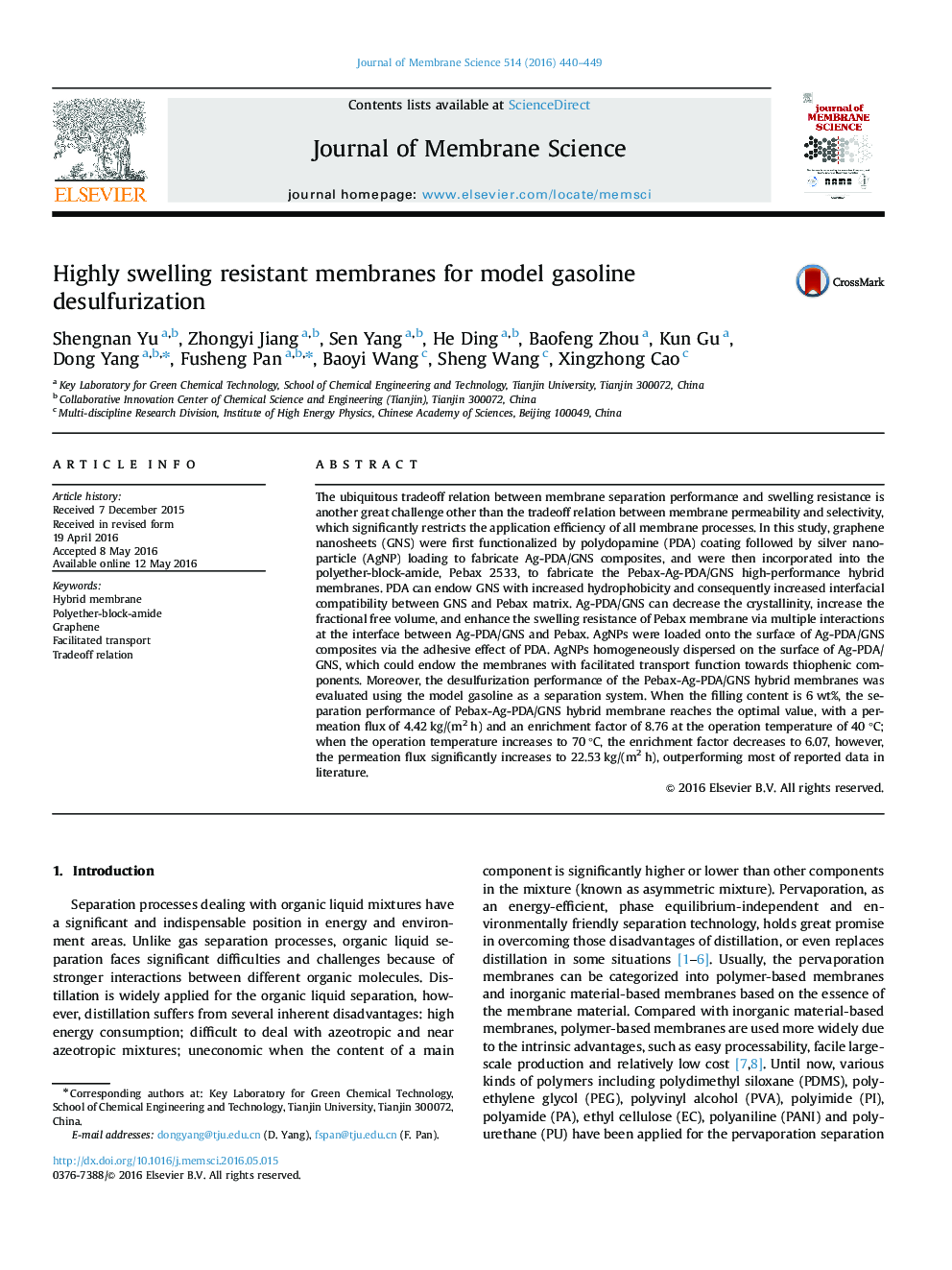| Article ID | Journal | Published Year | Pages | File Type |
|---|---|---|---|---|
| 632298 | Journal of Membrane Science | 2016 | 10 Pages |
•Pebax hybrid membranes filled with functionalized graphene were fabricated.•Membrane crystallinity and free volume property were tuned to enhance permeability.•Facilitated transport function was endowed by loading silver nanoparticles.•Tradeoff between separation performance and stability was successfully overcome.
The ubiquitous tradeoff relation between membrane separation performance and swelling resistance is another great challenge other than the tradeoff relation between membrane permeability and selectivity, which significantly restricts the application efficiency of all membrane processes. In this study, graphene nanosheets (GNS) were first functionalized by polydopamine (PDA) coating followed by silver nanoparticle (AgNP) loading to fabricate Ag-PDA/GNS composites, and were then incorporated into the polyether-block-amide, Pebax 2533, to fabricate the Pebax-Ag-PDA/GNS high-performance hybrid membranes. PDA can endow GNS with increased hydrophobicity and consequently increased interfacial compatibility between GNS and Pebax matrix. Ag-PDA/GNS can decrease the crystallinity, increase the fractional free volume, and enhance the swelling resistance of Pebax membrane via multiple interactions at the interface between Ag-PDA/GNS and Pebax. AgNPs were loaded onto the surface of Ag-PDA/GNS composites via the adhesive effect of PDA. AgNPs homogeneously dispersed on the surface of Ag-PDA/GNS, which could endow the membranes with facilitated transport function towards thiophenic components. Moreover, the desulfurization performance of the Pebax-Ag-PDA/GNS hybrid membranes was evaluated using the model gasoline as a separation system. When the filling content is 6 wt%, the separation performance of Pebax-Ag-PDA/GNS hybrid membrane reaches the optimal value, with a permeation flux of 4.42 kg/(m2 h) and an enrichment factor of 8.76 at the operation temperature of 40 °C; when the operation temperature increases to 70 °C, the enrichment factor decreases to 6.07, however, the permeation flux significantly increases to 22.53 kg/(m2 h), outperforming most of reported data in literature.
Graphical abstractFigure optionsDownload full-size imageDownload high-quality image (181 K)Download as PowerPoint slide
